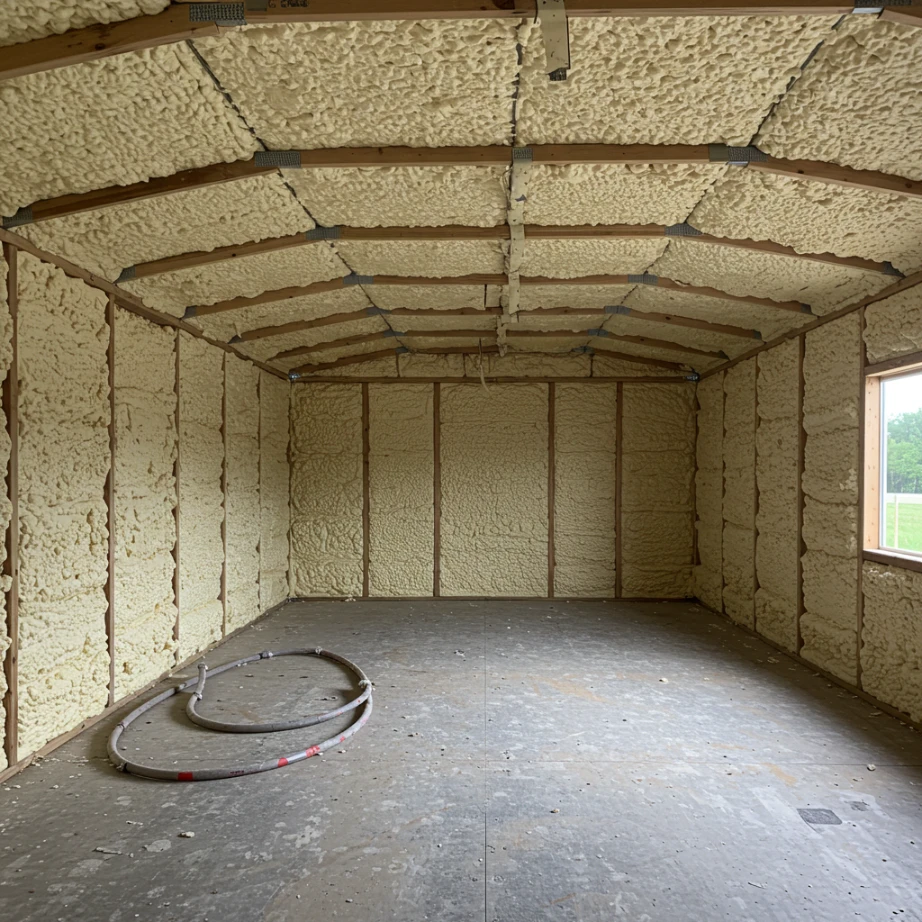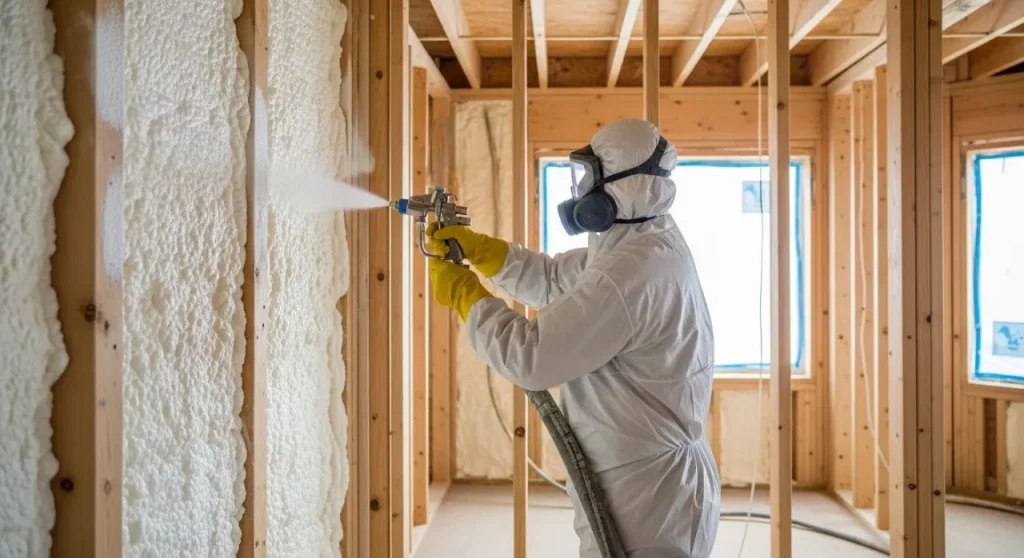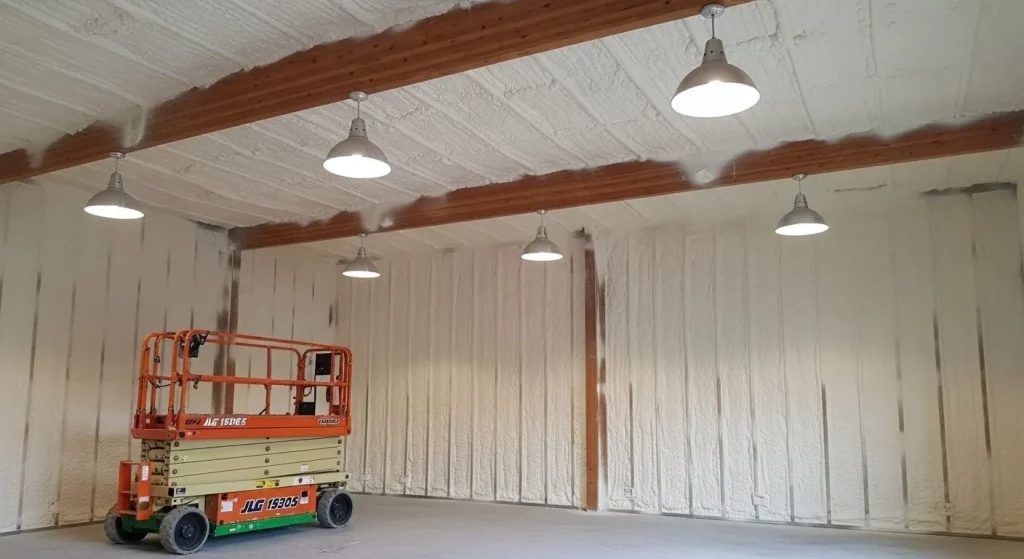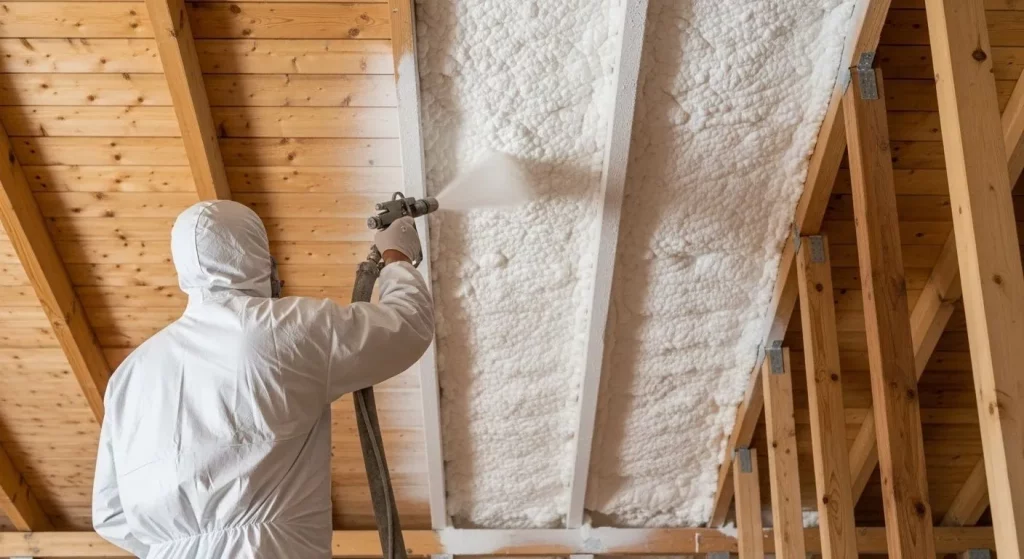Spray foam insulation helps keep indoor air fresher primarily by creating an airtight seal. Unlike traditional insulation materials that can leave gaps and seams, spray foam expands to fill every crack and crevice in a building’s envelope. This continuous barrier effectively stops the uncontrolled flow of outside air into the home, preventing outdoor pollutants, allergens, and moisture from entering. By controlling air exchange, spray foam directly contributes to a cleaner, healthier, and more comfortable indoor environment.
Creating an Effective Air Barrier
The single most important function of spray foam insulation in relation to air quality is its ability to establish a near-perfect air barrier. When applied, the liquid foam expands up to 100 times its original volume, conforming to any shape and sealing gaps around plumbing, electrical wiring, and structural joints. This is fundamentally different from materials like fiberglass batts, which are simply placed into wall cavities and cannot stop air movement on their own.
By stopping air leakage, you gain control over your home’s ventilation. Instead of unfiltered air seeping in through countless hidden openings, air exchange can be managed through the HVAC system, which is designed to filter out contaminants. This puts you in charge of the air your family breathes, rather than leaving it to chance.
Blocking Outdoor Pollutants and Allergens
A significant portion of indoor air pollution originates outdoors. According to the U.S. Environmental Protection Agency, outdoor air pollutants like pollen, dust, and other allergens can enter homes and buildings, affecting indoor air quality. An unsealed home acts like a sieve, allowing these microscopic particles to be pulled inside through pressure differences.
Spray foam’s airtight seal physically blocks the pathways these contaminants use to enter. This includes:
- Pollen and Dust: During high-pollen seasons, a well-sealed home can be a refuge for allergy sufferers.
- Vehicle and Industrial Emissions: For homes located near busy roads or industrial areas, spray foam can reduce the infiltration of harmful airborne chemicals.
- Pesticides and Fertilizers: Chemicals used in landscaping can also find their way indoors through air leaks in the foundation or walls.
By creating a solid barrier, spray foam minimizes exposure to these external triggers, contributing directly to a fresher and healthier indoor atmosphere.
Managing Moisture and Preventing Mold Growth
Moisture control is another critical factor for maintaining fresh indoor air. Air leaks are also moisture leaks. When warm, humid air from outside enters a cooler wall cavity, the moisture can condense, creating damp conditions perfect for mold and mildew. The Centers for Disease Control and Prevention states that mold exposure can cause symptoms like a stuffy nose, wheezing, and red or itchy eyes.
Closed-cell spray foam is particularly effective at this because it acts as a vapor barrier, resisting the passage of moisture. It doesn’t absorb water and its rigid structure prevents humid air from penetrating the building envelope. By keeping building materials dry, it removes one of the essential conditions for mold growth, preventing the musty odors and harmful spores that degrade air quality.
Bonus Tip: In crawl spaces, applying closed-cell spray foam to the foundation walls and rim joists is one of the most effective ways to stop ground moisture from entering the home, which is a common source of musty smells and high indoor humidity.
How Insulation Types Compare on Air Sealing
Not all insulation materials offer the same level of protection against air leakage and the problems it causes. The primary difference lies in their physical structure and installation method.
| Feature | Spray Foam Insulation | Fiberglass Batts | Blown-In Cellulose |
|---|---|---|---|
| Air Sealing Ability | Excellent (forms a continuous air barrier) | Poor (does not stop air movement) | Fair (settles over time, creating gaps) |
| Moisture Resistance | Excellent (closed-cell is a vapor barrier) | Poor (can absorb and hold moisture) | Poor (can absorb moisture, may slump) |
| Pollutant Blocking | Excellent (seals cracks and penetrations) | Poor (air flows freely through and around it) | Fair (better than batts, but not airtight) |
| Mold Prevention | Excellent (does not support mold growth) | Poor (organic binders can be a food source) | Fair (treated with borates to resist mold) |
This comparison shows that while all materials provide thermal resistance, only spray foam actively seals the structure to manage air and moisture infiltration effectively.
Things to Consider Before Making a Decision
Before choosing spray foam insulation, it’s good to understand a few related factors to ensure the best outcome for your home’s air quality.
HVAC System Interaction
Sealing a home with spray foam significantly reduces its natural air leakage. This is great for energy efficiency and air quality, but it also means your HVAC system becomes the primary source of fresh air. A home that is sealed too tightly without adequate mechanical ventilation can trap indoor pollutants like cooking fumes or chemicals from cleaning products. It’s often a good idea to have an HVAC professional assess whether your current system is equipped to handle the ventilation needs of a tightly sealed home.
Bonus Tip: Ask an HVAC contractor about installing an Energy Recovery Ventilator (ERV) or Heat Recovery Ventilator (HRV). These systems introduce fresh, filtered outdoor air while exhausting stale indoor air, all without sacrificing energy efficiency.
Type of Spray Foam
There are two main types of spray foam, and their properties differ:
- Open-Cell Spray Foam: Has a softer, more flexible texture. It is an excellent air barrier but is vapor-permeable, meaning it will allow moisture to pass through. It’s often used in walls and attic roof decks where moisture diffusion is desired.
- Closed-Cell Spray Foam: Is rigid and dense. It acts as an air, vapor, and water barrier. Its high R-value and structural strength make it ideal for foundations, crawl spaces, and situations requiring robust moisture control.
The right choice depends on your climate, the application area, and your specific air quality goals.
Professional Installation is Key
The performance of spray foam insulation is heavily dependent on the quality of the installation. An experienced and certified installer will ensure the foam is mixed at the correct temperature and applied at the proper thickness. Proper installation also involves managing ventilation during and after application to ensure the foam cures correctly and any volatile organic compounds (VOCs) are safely vented away. A report from the U.S. Environmental Protection Agency highlights that proper re-entry times after installation are important for safety.
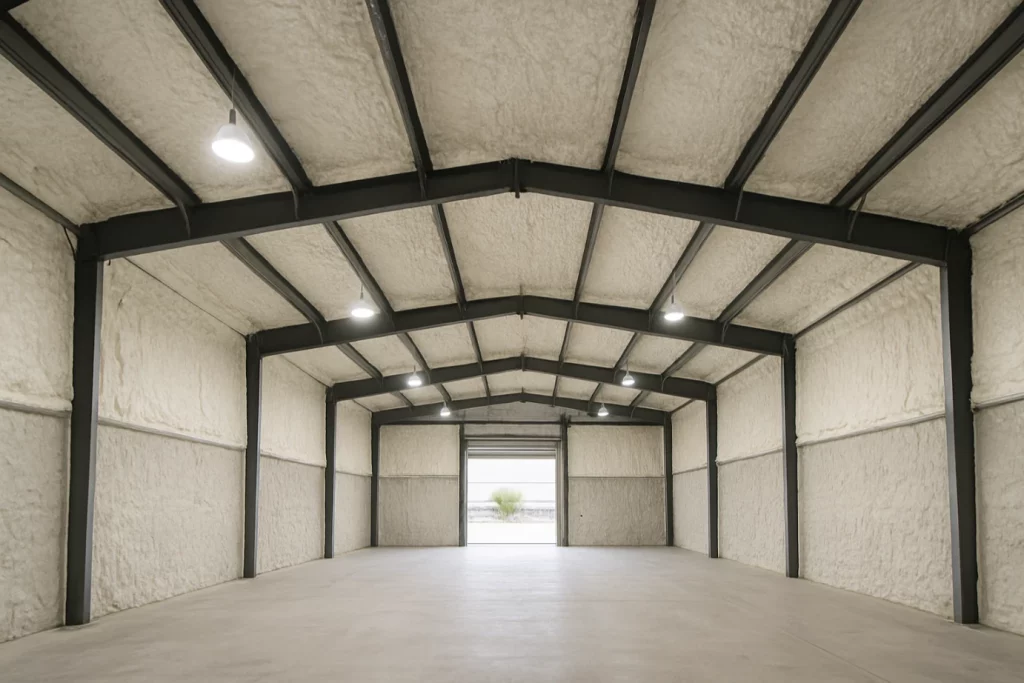
Making an Informed Insulation Choice
Ultimately,spray foam’s effectiveness in improving indoor air quality stems from its ability to create a comprehensive air seal. By controlling the infiltration of pollutants, allergens, and moisture, it helps establish a healthier and more comfortable indoor environment. To achieve the best results, it is crucial to evaluate your home’s specific conditions from its ventilation system to its unique leakage points before making a final decision.
To see how modern insulation materials are performing in field conditions, take a look at our overview of real-world testing results for advanced spray foam systems.
Get a Professional Assessment
Understanding your home’s unique air quality challenges is the first step toward a solution. For a thorough evaluation and to see if this insulation is the right fit for your property, it’s best to consult with experienced professionals. Raleigh Excel Spray Foam Insulation can provide a detailed assessment of your home’s building envelope. Contact the team by email at [email protected] or by phone at (919) 301-9435 to discuss your specific needs and get clear answers to your questions.
Sources
- U.S. Environmental Protection Agency– Provides information on common indoor and outdoor air pollutants and their impact on health.
FAQS
Does spray foam off-gas after it cures?
Modern spray foam insulation products are formulated to be stable and inert once fully cured. The initial spraying process does release VOCs, which is why the home must be vacated during application and for a specified curing period, typically 24 hours. After that, professional-grade foams are designed not to release harmful chemicals into the air.
Can spray foam insulation help reduce noise?
Yes, especially open-cell spray foam. Its soft, porous structure is excellent at absorbing sound waves, which can lead to a much quieter indoor environment. It helps dampen noise from outside traffic as well as sounds from within the home, like plumbing runs.
Is spray foam a fire hazard?
Spray foam insulation is required to be manufactured with fire retardants and must meet strict building code requirements for fire safety. As with any insulation material, it must be covered by an approved thermal barrier, such as drywall, to separate it from living spaces.
Will sealing my home with spray foam make it feel stuffy?
A home sealed with spray foam won’t feel stuffy if it has a properly functioning mechanical ventilation system. The stuffiness people sometimes associate with tight homes comes from a buildup of indoor pollutants and humidity when there’s no system in place to exchange stale air for fresh air.




